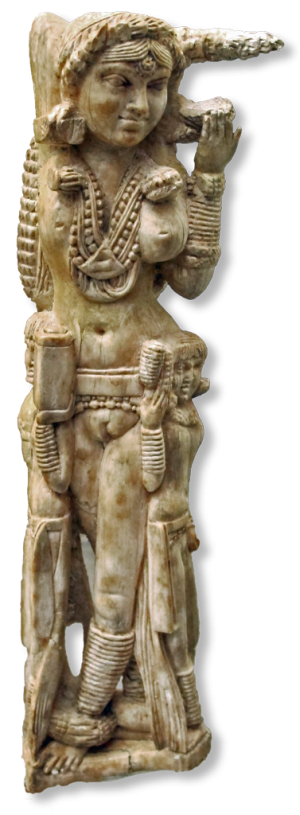From that "Crucifixion as Spectacle" article:
It is not necessary to attempt a “definitive” interpretation of the graffito here. Perhaps the artist who inscribed the graffito did not intend it to be a woman. But the person who wrote “Alkimila” did want the onlookers to view the crucified individual as a woman. Latin and Greek inscriptions do not necessarily imply that it was a slave’s name. 113 The lines on the body and left leg are unusual. They may portray curvature or possibly marks from scourging. Langner’s collection of Roman graffiti contains a large number of scenes in which the artists drew lines to help indicate flat planes or curved planes. 114 In any case one cannot conclude that the lines indicate an animal’s skin that would have been used in a damnatio ad bestias. 115 The graffito could reflect the practice of crucifixion in Puteoli, or perhaps it is merely some kind of curse or jest. The author of the Alkimila graffito probably intends the scene to portray a historical crucifixion, just as the wealth of graffiti of gladiators in Pompeii often portrayed known fighters. The graffito of the crucified woman is at the least a moving scene of death for the modern viewer and presumably for many ancient viewers who had some direct experience of the penalty.
I’ve been aware of this graffito for a number of years, but this is the first time I’ve seen it interpreted as the crucifixion of a woman.
Hmmm. . . .










